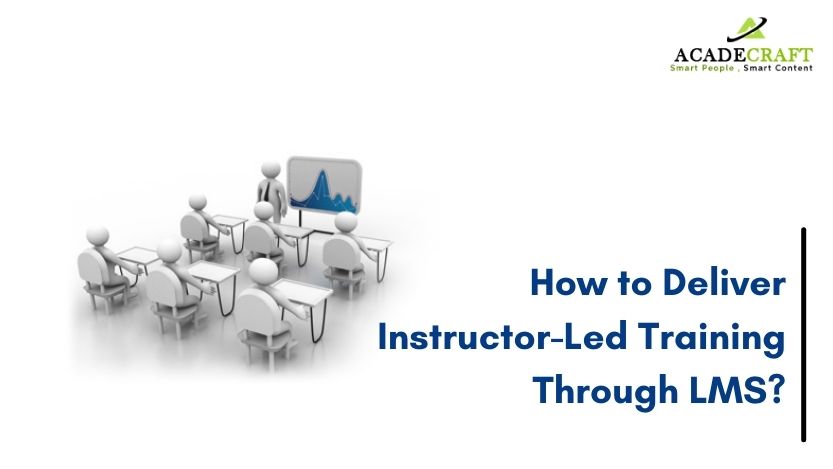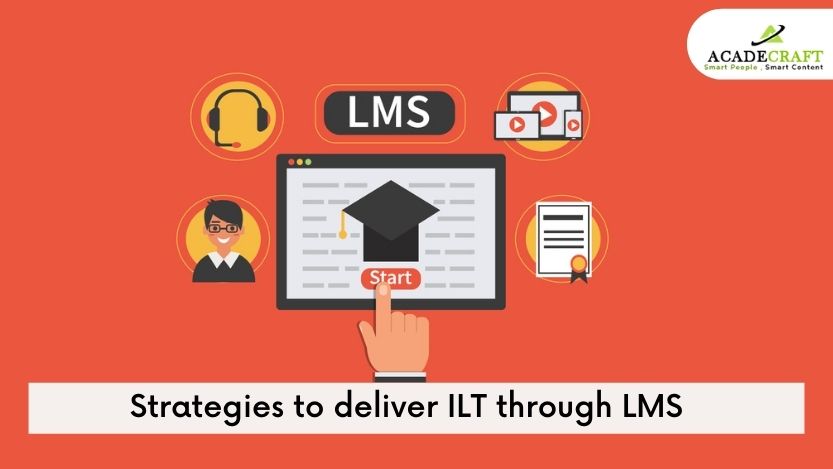
The ILT (Instructor-Led Training) is a training approach in which Instructors are present, and their knowledge helps the learning group to know more about concepts. It could be done online or offline, but due to the COVID-19 crisis, 60% to 70% of organizations delivered ILT solutions through LMS. The LMS is a digital learning environment that allows clients to deliver learning solutions to the target learning group.
However, there are few companies who think LMS is only used in delivering eLearning or online learning courses. But the fact is, 80% of companies are planning to deliver ILT solutions through LMS by 2026. How? Here are a few ways.
A timetable is essential to manage tasks and priorities. Therefore, the same process is easy to follow while scheduling the ILT session. Use this LMS system and specify the date and time of classes. One more thing that needs to be mentioned is whether it will be an individual learning session or a multiple group. Then, share this information amongst learning groups and grant them permission to join classes by sharing links.
The plus point of doing the same is that clients easily track down the number of participants joining and on which date the class is there. Once properly scheduled in the LMS, clients and learners will get information about the date and time of ILT sessions through push notifications or reminders. It is a fact that 70% of organizations face scheduling problems in their ILT sessions during normal times. But this LMS tool will eliminate all such issues.
There is no hard and fast rule that sessions should be hosted at this time and date. What if learners do not have time at that moment? That is why LMS is an effective tool to manage this issue. So, clients can allow learners to self-register for the session and choose the preferred date and time. Also, learners have the freedom to choose which learning module they prefer on a priority basis.
One survey shows 70% to 80% of learners prefer flexibility in the schedule of training sessions. However, clients need to determine the number of learning audiences. Therefore, program the LMS in such a manner that it ?caps? the number of learners. For instance, your company can accommodate 1000 learners, make relevant programming changes or settings to ?1000 learners?.
Whether it is an offline or an online Instructor-Led Training session, an invitation email is a good way to notify about the learning session. Give some brief insights about the training module, mention the name of the instructor who is hosting the session, and define the type of training it will be. One study shows invitation emails are 95% effective in the active participation of learners.
As far as LMS is concerned in this context, it has features to deliver automated emails that notify the learning group. Within a few clicks, emails are sent to the learner.??

Automatic reminders and push notifications give regular updates about the learning session. Such notifications work for clients who host the session and all other attendees. Advanced LMS has the reminder feature and gives automatic updates about the same. Also, it will update according to the number of attendees.
LMS has tools that help users with reminders and are accessible in all platforms coherently working for individuals and groups. Such reminders of upcoming ILT training deadlines can be set up quickly to ensure learners are aware of the courses which are going on. One more good thing is, only registered users will get such reminders.
Automated quizzes and interactive assessments is supplementary tool for instructor-led training sessions. Remember that modern-day learning groups do not entirely prefer in-person training. Hence, they require some sort of interactivity to engage themselves. An LMS has such automated solutions with a real-time scoring system and feedback that highlight certain improvement areas.
According to one stat, 95% of market leaders believe that gamifying or including interactivity in the training solutions increases engagement. Hence, there will be more active participation, and clients easily convey the learning message to learners.
Finally, the major issue in conventional ILT sessions is, ?how to track the learning progress?? Hence, to make this task easier, 77% of companies in the USA use LMS to track the learning progress. The LMS comprises analytical tools which represent the performance in the form of graphs and charts.
Moreover, KPIs (Key Performance Indicators) are also a popular element that gives clients or learners ideas to improve the learning pathway. Considering the analytical feedback, clients? upskill or upgrade training programs for better engagement.
Instructor-led training solutions are the need of corporate training. However, due to these social distancing guidelines, clients need to switch to digital modes for a convenient and hassle-free training experience. Thus, LMS is the best tool for all training delivery concerns. Whether it is offline or online training, it works for all learning mediums. Acadecraft is one of the leading LMS service providers in the USA that designs advanced LMS for all business training needs.
Share